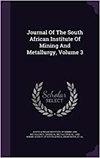南非矿业部门的能源效率:以普马兰加省一个煤矿为例研究
IF 0.9
4区 材料科学
Q3 Materials Science
Journal of The South African Institute of Mining and Metallurgy
Pub Date : 2023-10-23
DOI:10.17159/2411-9717/1788/2023
引用次数: 0
摘要
提高能源效率是一种既能加强能源安全又能限制能源使用对环境的有害影响的经济有效的方法。采矿业本质上是一项能源密集型活动,2008年修订的南非国家能源效率战略(NEES)设定了到2015年采矿业能耗减少10%的目标。在这项研究中,我们调查了NEES在提高南非煤炭开采部门能源效率方面的有效性,通过调查一些业务的能源强度,并分析了普马兰加省一个地下煤矿的能源效率趋势和能源使用过程和能源载体。大多数被调查的矿山随着时间的推移表现出能源强度的增加。在案例研究矿山中,增加主要是由于选矿和废料回收过程中的能源使用增加。能源消耗的趋势不能很好地反映能源强度的趋势,因为能源消耗的下降最容易通过减少生产来实现。衡量煤矿能源效率的一个更合适的指标是能源强度,定义为相对于多年基线的每单位可销售产品的能源使用量。有证据表明,NEES在促进南非煤矿的能源效率方面是无效的。我们建议,通过在流程层面监测和报告能源强度,以及通过激励能源效率的提高,可以取得更大的成功。本文章由计算机程序翻译,如有差异,请以英文原文为准。
Energy efficiency in the South African mining sector: A case study at a coal mine in Mpumalanga
Energy efficiency is a cost-effective way of both bolstering energy security and limiting the harmful effects of energy use on the environment. Mining is an inherently energy-intensive activity, and the 2008 revision of South Africa's National Energy Efficiency Strategy (NEES) set a target of a 10% reduction in energy consumption by 2015 for the mining sector. In this study, we investigate the effectiveness of the NEES in improving energy efficiency in the South African coal mining sector by surveying energy intensity at a number of operations, and analysing energy efficiency trends and energy use by process and energy carrier at an underground coal mine in Mpumalanga. Most mines surveyed exhibit an increase in energy intensity over time. At the case study mine, the increase was primarily due to increased energy use in the beneficiation and discard reclaiming processes. Trends in energy consumption are a poor reflection of trends in energy intensity, as a decline in energy consumption is most easily achieved by reducing production. A more appropriate metric for energy efficiency at coal mines is energy intensity, defined as energy use per unit of saleable product, relative to a multi-year baseline. The evidence suggests that the NEES has been ineffective in promoting energy efficiency in South African coal mines. We propose that greater success could be achieved by monitoring and reporting on energy intensity at the process level, and by incentivizing energy efficiency gains.
求助全文
通过发布文献求助,成功后即可免费获取论文全文。
去求助
来源期刊
CiteScore
1.50
自引率
11.10%
发文量
61
审稿时长
4-8 weeks
期刊介绍:
The Journal serves as a medium for the publication of high quality scientific papers. This requires that the papers that are submitted for publication are properly and fairly refereed and edited. This process will maintain the high quality of the presentation of the paper and ensure that the technical content is in line with the accepted norms of scientific integrity.

 求助内容:
求助内容: 应助结果提醒方式:
应助结果提醒方式:


